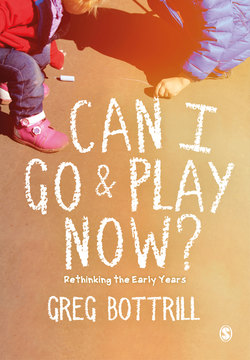Читать книгу Can I Go and Play Now? - Greg Bottrill - Страница 22
На сайте Литреса книга снята с продажи.
Engagement is absolutely vital not only to behaviour but also to learning
ОглавлениеHaving said that, we know that within a school day it is not always as easy to do as to say, so let’s consider the second key component to the children’s universe if we are going to allow them the necessary freedom that they deserve and thrive in.
‘Some day soon I will forget this junkyard/Take you with me if you’re going that way/It’s a changing world and I can tell you one thing/Time is wasting, shadows waiting/Love will slip away’ – Julie Profumo, Cleaners From Venus
We all live for reward in some way. We’re conditioned to it. We work for a wage. We love to receive love. This reward can sometimes be one we’re not always aware of and it can also be tangible like money as well as abstract like happiness or being teenage-ingly in endorphin-driven love.
Children are no different. The most common reward that teachers think of is the trusty sticker – stars, footballs, monsters, fairies, etc. The problem here is that this favourite can soon prove divisive. Almost as soon as the sticker has hit the school jumper you can hear the other children in the near vicinity asking for stickers too, and then the clamour begins, and the questioning and the general sense of unfairness that 9/10 times ensues. And it’s usually those children who don’t necessarily day-in-day-out deserve a sticker that are the quickest to be rewarded for doing things that the rest of the class do without prompting.
A more preferable solution is to use the class charter as the starting point and introduce a class reward system. This way the children are working as a collaborative team to ensure that they explore and make decisions for the collective good. As soon as you catch children making the choices that you have agreed in your charter, then you award them, not as an individual but as a whole. In my own setting we use go-gos, small brightly coloured plastic aliens that are stored in a see-through pot. Next to this pot is another pot to which go-gos are transferred one by one for acts of positive behaviour. As soon as the pot is empty, the class gets some reward whether it be bubbles, sitting on a whoopee cushion, a go with a light sabre, being sprayed in the face with water – whatever thing makes them laugh and know that they have done a Good Thing. It’s an incredibly powerful way to ensure that children see themselves as part of something bigger than being an individual.
‘Children waiting for the day they feel good/Happy Birthday, Happy Birthday/Made to feel the way that every child should/Sit and listen, sit and listen/Went to school and I was very nervous No one knew me, no one knew me ...’– Mad World, Tears For Fears
This is where your boundaries, high expectations and collective reward system combine to meet all these developmental needs while at the same time hopefully being open to some laughter and a sense of fun along the way. And children thrive on fun, on being happy and safe. You have created a perfect positive storm in preparation for the terms ahead in which children can explore and investigate within a structure that recognises them as people first and foremost. They feel rewarded for their demonstrations of operating within their agreed systems and are housed in a clear and unfussy room which enables them to think, feel and be.
Alongside all of this lies you as the model. The boundaries that you have created with the children need to be followed by you. If you have agreed with the children that ‘indoor voices’ need to be used because the children want a quiet indoor environment, you yourself as the adult need to follow their rule too. This means no shouting across the space to get children’s attention or barking commands as the children line up. You need to model the expectations children have agreed on. If you don’t, then the children will quickly see through you and begin to question why they should need to behave within the boundaries too. It’s a very subtle thing that happens here and if children begin to have their respect for you eroded, it can be very difficult to win back. Get it right from day one and you give yourself the best chance to create something wonderful for your children, the memory of which will stay with them for a long time and, who knows, it may even stay with you too.
‘In this elegant chaos I stand to one side ...’ Julian Cope
The two words ‘day one’ in that last sentence are really important. All too often there’s a rush to assess, monitor and find a baseline. Yes, starting points are critical if we are to understand children’s Next Steps, but this needs to come from the Early Years practitioner not via pressure from further up the school or just because that’s what the school do at a certain point in the school year. You need time to make relationships, create the charter, allow children to find their feet, enable them to make friends, and for them to grow into the universe that you have created for and with them. And yes, tracking progress is a useful element of ensuring that your children are being challenged and are thriving, but often this is an expectation based on the desire for data outcomes rather than the well-being of children. Get well-being right and data will follow, so give yourself time to make this happen and wherever possible resist the thumbscrew of scrutiny that dogs our KS1/2 colleagues.
